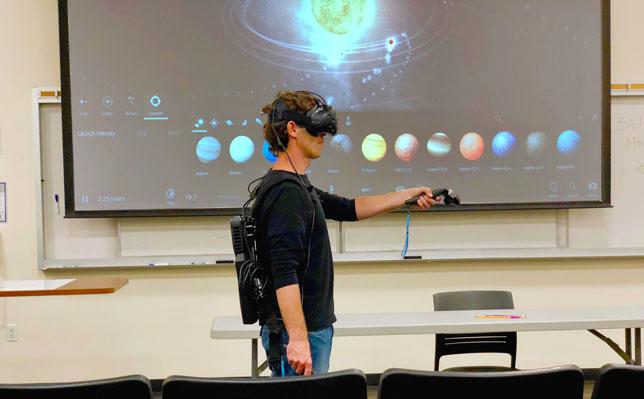Top Case Studies of Successful VR/AR Implementations in Schools: Inspiring Real-World Examples
Educational technology is evolving rapidly,wiht Virtual Reality (VR) and Augmented Reality (AR) emerging as groundbreaking tools in the classroom. Schools worldwide are embracing these immersive technologies to create dynamic learning experiences that foster engagement, collaboration, and deep understanding. In this article, we explore inspiring case studies of successful VR/AR implementations in schools and provide practical insights for educators looking to integrate these tools into their teaching practice.
Why Are VR and AR Transforming Education?
VR and AR in education are rewriting the playbook for interactive learning. By leveraging the power of immersion, these technologies:
- Boost student engagement and motivation
- Enhance retention through experiential learning
- Visualize complex and abstract concepts effortlessly
- Promote collaborative and creative problem-solving
- Bridge geographical barriers for global classroom experiences
Ready to see these advantages in action? Let’s delve into some of the world’s most inspiring real-world case studies of successful VR/AR adoption in schools.
Top Case studies of successful VR/AR Implementations in Schools
1.Banagher College, Ireland: Bringing History to Life
Banagher College in County Offaly, Ireland, set out to invigorate history lessons with VR field trips. By harnessing the power of Google expeditions, students virtually explored ancient sites, such as the Roman Colosseum and the trenches of World War I.
- Student Engagement: Teachers reported an unprecedented increase in engagement and curiosity during lessons.
- Learning Outcomes: Students demonstrated improved information retention and greater empathy through immersive experiences.
- Teacher Testimonial: “Our students where excited to step into places they had only read about. VR has made history real and relatable.”
2. Menlo park Academy, United States: Exploring STEM with Augmented Reality
This STEM-focused charter school in Ohio integrates Augmented Reality apps like Merge Cube and AR flashcards to enhance hands-on science and math learning.
- practical Science: Students interact with 3D organs, molecules, and planetary systems directly in the classroom.
- Critical Thinking: Engagement with AR models fosters problem-solving skills and deeper conceptual understanding.
- First-Hand Experience: “Making a beating heart appear in your hands is unforgettable. Students are excited to learn and explore more on their own,” says a science teacher at the school.
3. Yuanjing International School, China: Language Learning Through VR Immersion
At Yuanjing International School, VR language labs are integrated into regular English classes. Through platforms like ClassVR and Engage VR, students practice language skills in virtual environments such as shopping malls, airports, or cultural festivals.
- Real-World Context: Students apply vocabulary and conversational skills with virtual characters.
- Assessment: Oral proficiency and confidence in speaking have notably increased.
- Feedback: “VR has broken down barriers for shy students, letting them practice language in a safe and fun way.”
4. The Whitby School, United Kingdom: Inclusive Education with AR
The Whitby School leverages AR technology for special education, using apps like Quiver and AR Learning Sandbox to cater to students with learning differences.
- Personalized Learning: Visual aids and interactive stories help dyslexic students grasp reading and spelling concepts more effectively.
- Sensory Engagement: Multisensory AR elements capture student attention and aid memory recall.
- inclusive Impact: Educators notice higher participation and enjoyment from typically disengaged learners.
5. Japanese Ministry of Education: Molecular Biology in VR Labs
Japan has taken a national approach, investing in VR biology labs that allow students to explore cell structures at the microscopic level, conduct experiments, and visualize DNA replication processes.
- Cost Efficiency: expensive and hazardous real-life experiments are now simulated virtually, saving resources.
- Depth of Understanding: Students report a clearer grasp of abstract biological mechanisms.
- National Reach: Over 500 schools are now equipped with VR kits, benefitting thousands of students across the country.
Benefits of VR/AR in Schools: What the Research Says
Multiple academic studies affirm the efficacy of VR/AR integration in educational settings:
- Improved Retention: Immersive learning increases memory recall by up to 80% compared to traditional methods (Stanford Graduate School of Education, 2021).
- Increased Engagement: Students using AR/VR show greater enthusiasm for STEM and humanities subjects.
- Support for Diverse Learners: VR/AR supports individualized learning paths, opening new opportunities for students with disabilities.
Practical Tips for Successful VR/AR Implementation in Schools
Considering implementing VR or AR in your classroom? Here are some expert tips to ensure success:
- Start Small: Pilot with one lesson or module before scaling up across subjects.
- Staff Training: Invest in professional development to help teachers master the technology.
- Select Accessible Platforms: Use user-amiable and curriculum-aligned solutions like Google Expeditions,ClassVR,or Merge Cube.
- Ensure Equity: Provide equal access for all students, including those with special needs or from underserved communities.
- Focus on Learning Goals: Keep pedagogy at the forefront; use technology to enhance—not replace—effective teaching.
First-Hand Experiences: Teachers and Students Share Their Stories
“Using VR for virtual field trips transformed my social studies classes. Students were engaged, asked deeper questions, and retained far more information than with textbooks alone.”
– Julie O., Middle School Teacher, Florida
“When we used AR to model fractions in math, even my struggling students gained confidence. It took abstract ideas and made them tangible.”
– Amira K., Elementary Teacher, London
“The VR science lab was amazing! I finally understood how atoms fit together—it’s like I was inside the molecule.”
– Rahim,8th Grade Student,Tokyo
Conclusion: The Future of VR and AR in Education
The successful implementation of VR/AR in schools is more than a trend—it’s a transformative shift in how we teach and learn. These real-world examples demonstrate that, when thoughtfully integrated, immersive technologies can break down walls, unlock creativity, and re-energize classrooms for the better. as the cost of entry lowers and more educational content becomes available, we can expect even more inspiring stories of schools harnessing the power of Virtual and Augmented Reality to make learning unforgettable.
If you’re ready to take the next step, explore pilot programs, connect with peers who’ve successfully implemented VR/AR, and start your own journey toward an immersive, future-ready classroom!

